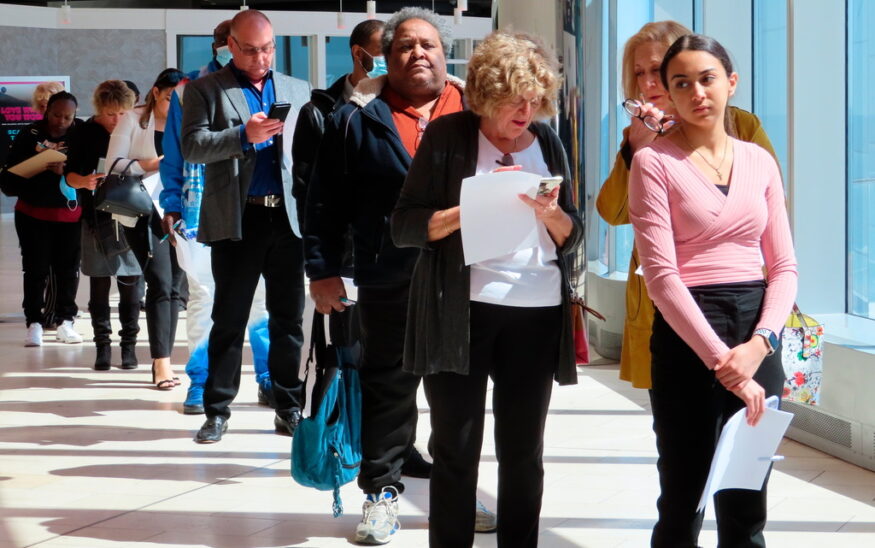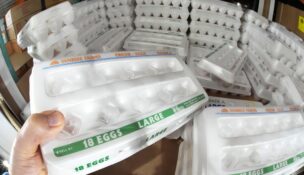Fewer Americans sought unemployment benefits last week as job cuts stay low

FILE - Applicants line up at a job fair at the Ocean Casino Resort in Atlantic City N.J., on April 11, 2022. (AP Photo/Wayne Parry, File)

FILE - Applicants line up at a job fair at the Ocean Casino Resort in Atlantic City N.J., on April 11, 2022. (AP Photo/Wayne Parry, File)
Fewer Americans sought unemployment benefits last week as job cuts stay low
Summary:
- Jobless claims fall to 216,000, below forecasts
- Continuing claims rise to 1.96 million as job hunts lengthen
- Labor market remains “low-hire, low-fire” despite big-name layoffs
- Cooling retail sales and confidence fuel Fed rate-cut expectations
WASHINGTON (AP) — The number of Americans applying for unemployment benefits declined last week in a sign that overall layoffs remain low, even as several high-profile companies have announced job cuts.
U.S. applications for unemployment benefits in the week ending Nov. 22 dropped 6,000 from the previous week to 216,000, the Labor Department reported Wednesday. The figure is below the 230,000 forecast by economists, according to a survey by data provider FactSet.
Applications for unemployment aid are seen as a proxy for layoffs and are close to a real-time indicator of the health of the job market. The job cuts announced recently by large companies such as UPS and Amazon typically take weeks or months to fully implement and may not yet be reflected in the claims data.
The four-week average of claims, which softens some of the week-to-week volatility, dropped 1,000 to 223,750.
For now, the U.S. job market appears stuck in a “low-hire, low-fire” state that has kept the unemployment rate historically low, but has left those out of work struggling to find a new job.
The total number of Americans filing for jobless benefits for the week ending Nov. 15 rose 7,000 to 1.96 million, the government said. The increase is a sign that the unemployed are taking longer to find new work.
Last week, the government said that hiring picked up a bit in September, when employers added 119,000 new jobs. Yet the report also showed employers had shed jobs in August. And the unemployment rate ticked up to 4.4%, its highest level in four years, as more Americans came off the sidelines to look for work but did not all immediately find jobs.
On Tuesday, the government reported that retail sales slowed in September after three months of healthy increases. Consumer confidence plunged to its second-lowest level in five years, while wholesale inflation eased a bit.
The data suggests that both the economy and inflation are slowing, which boosted financial markets’ expectations that the Federal Reserve will reduce its key interest rate at its next meeting Dec. 9-10.
s
















